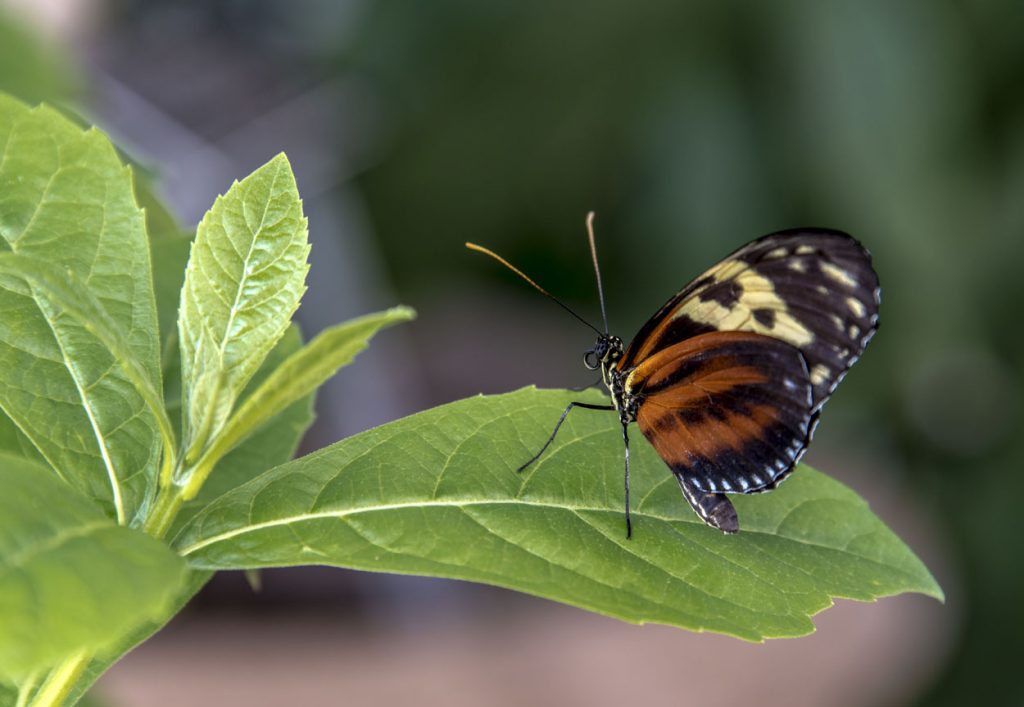A Look at Butterfly Farms
Butterflies are some of the most beloved and charismatic creatures in nature. They excite and inspire curiosity of visitors at the Butterflies LIVE! exhibit. One of the most frequently asked questions from our visitors is: where do the butterflies come from? The answer is, from all over the world! Our butterflies have undergone one of the most amazing transformations of metamorphosis and many have even traveled across oceans or continents during their transformation. The efforts of breeders, farmers, distributors and finally the butterfly curators at Lewis Ginter Botanical garden, have gone into providing visitors with an up close and personal learning experience and the opportunity to observe and appreciate the beauty of native and tropical butterflies. However, the benefits of our exhibit reach further than the visitors who come here to see Butterflies LIVE!
The butterflies begin their journey on butterfly farms in remote tropical locations in countries like Columbia, Costa Rica, Malaysia, and the Philippines. A butterfly farm typically consists of breeders and farmers working to provide and maintain an area suitable for the butterflies to reproduce — an area full of native host plants for the butterflies to lay their eggs on as well as plenty of nectar plants to sustain them. In order to be successful, butterfly farms must preserve the natural environment because native host and nectar plants provide food for caterpillars and butterflies. Reforestation and plant restoration are some of the ways that farmers have been able to increase the percentage of butterflies that will reach maturity.
LPS is the distributor of tropical butterflies that we use, which partners with many farms and businesses all over the world. I have chosen a few of these partners to highlight the positive environmental and social impacts of the butterfly business. For example, it is likely that many of the butterflies in the exhibit come from farms located on protected nature preserves. Bioproductores is a butterfly business based out of El Salvador and is located on the El Refugio nature preserve. El Refugio serves as a hub for ecological and horticultural research, as well as an example of an economically viable business that depends on the health of the environment. Naturalists and ecologists have rediscovered species that were thought to be extinct and even discovered new species in this territory as a result of restoration efforts. Another example of such a business is EcoDecision, located in Equador. EcoDecision is involved in research, fundraising, and creating projects that will ultimately serve its mission of biodiversity conservation. Heliconius Butterfly Works is one of EcoDecision’s many projects and supplies Heliconius butterflies, or Longwings, which we feature at Butterflies LIVE!
In addition to the many environmental benefits, some of the farms have also been examples of positive social change. Arenillo Butterfly Farm of Alas de Columbia is located in the mountains of Palmira, Valle de Cauca. This particular butterfly farm prides itself on employing primarily women and providing jobs and a source of income to people in rural areas. This is especially important in a country like Columbia where illegal crops, and the trade of them, have historically caused violence and social unrest. Butterfly farms like Arenillo have created an alternative and an opportunity for women to provide for their families.
As an environmentalist I approach my work as a Butterfly Curator is an opportunity to engage people and educate them about pollinators, but also as an opportunity to learn and question. Spending time researching the origins of our butterflies, that we use as living educational tools, and finding that many are being raised on farms that promote environmental and social change, has made my experience here that much more meaningful. It is encouraging to know that the businesses that make Butterflies LIVE! possible are dedicated and proud to be sustainable and socially responsible.
